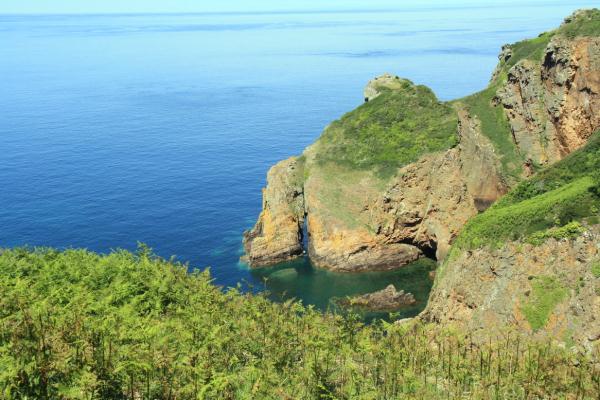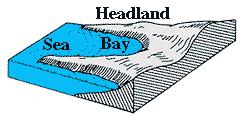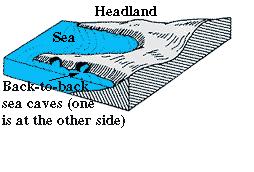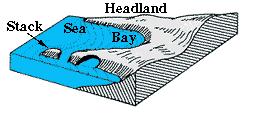Île Agois

You will find the mentioned coordinates by following the coastal footpath at the northern coast of Jersey. From the mentioned coordinates, you have a good look on the Île Agois and an information board gives some explanations.
It is NOT posible to visit the island itself for security reasons.
Furthermore there is no direct access to the island.
The Île Agois is a tidal stack which lies off the north coast separated from the mainland of Jersey.
A stack is a geological landform consisting of a steep and often vertical column or columns of rock in the sea near a coast, isolated by erosion. Stacks are formed through processes of coastal geomorphology, which are entirely natural. Time, wind and water are the only factors involved in the formation of a stack. They are formed when part of a headland iseroded by hydraulic action, which is the force of the sea or water crashing against the rock. The force of the water weakens cracks in the headland, causing them to later collapse, forming free-standing stacks and even a small island. Without the constant presence of water, stacks also form when a natural arch collapses under gravity, due to sub-aerial processes like wind erosion.
The formation process usually begins when the sea attacks small cracks in a headland and opens them. The cracks then gradually get larger and turn into a small cave. When the cave wears through the headland, an arch forms. Further erosion causes the arch to collapse, leaving the pillar of hard rock standing away from the coast called a stack. Eventually, erosion will cause the stack to collapse, leaving a stump. This stump is usually a small rock island, small enough to be submerged by high tide.
Examples for such stacks are e.g. the “Ball’s Pyramid” in Australia, the “Percé Rock”, Quebec/Canada or the “Old man of Hoy” in Scotland.
Development of a stack
Stage 1

Differential rates of erosion along a coast with alternate bands of hard and soft rocks results in an irregular coastline --- Headland and Bay.
Stage 2

As waves enter the shallow waters of the headland, the retarding influence of the shallow waters causes the wave fronts to bent and get refracted. Due to the wave refraction, wave energy is more concentrated towards headlands and dissipated towards bays.
Marine processes --- hydraulic action and corrosion erode along lines of weakness (e.g. joints, faults and bedding planes). Two back-to-back caves first form at a headland on each side.
Stage 3

Continuous erosion causes these back-to-back caves to extend backward till the sea caves meet and a natural tunnel is produced. The top portion of the sea caves becomes an arch, linking the tip of the headland with the mainland.
Stage 4

When the arch collapses, the sea ward pillar is left standing and becomes a stack. Continual wave erosion eventually reduces the stack into a stump.
Stacks typically form in horizontally bedded sedimentary or volcanic rocks particularly on limestone cliffs. These rock types' medium hardness means medium resistance to erosion. A more resistant layer may form a capstone. Cliffs with weaker rock such as clay tend to slump and erode too quickly to form stacks, while harder rocks such as granite usually erode in different ways.
Île Agois is one of the seldom cases in which a stack was formed out of granite, which makes this very special geological landfrom even more interesting.
As Île Agois sticks out from the cliff line, the sea is able to attack it's base from thre sides. When you look to Île Agois from the mentioned coordinates, you will see that the very left part also is in process of isolating from the Île and only connects through a narrow stone bridge.
Besides the geolocial particularity of Île Agois, there are some interesting archaeological specialities.
Excavations carried out on Île Agois in the 1950s and 70s revealed traces of some rectangular buildings on the summit and some semi-circular huts situated on artificially enhanced terraces down the sloping surface of the island.
These buildings date to the 7th or 8th century AD and are thought to be the remains of an early Christian eremetic monastry.
A large quantity of Iron Age artefacts dated to 800-55 BC, including some pottery from southern Britain and France shows that the site was important during this period, although the island was probably still connected to Jersey at this time.
On site you will find a information board giving some more information about the above mentioned excavations.
To log this Eartcache, please do the following :
1. OPTIONAL : Post a picture of your team or your GPS showing the Île Agois in the background
alongwith your log. This is just a OPTIONAL requirement, but surely nice to have...
2. Answer the following questions and email your reply to myself.
a) How much buildings were obviously located at the summit of the island ?
b) To which period are the traces of those buildings dated ?
c) How wide do you judge the split between the island and the mainland to be (estimate)
d) How long to you judge the small stone bridge on the left part of the Île (estimate)
e) As the island exists only because of the tidal influence, please post the tide times of the day in your log.
You do not need to wait for a permission to log. However, logs not meeting the requirements may be deleted without notice. YOU SHOULD MAKE SURE TO SEND REPLIES TO ME B E F O R E YOU LOG. IF YOU HAVE A INTERNET CONNECTION TO LOG, YOU SHOULD AS WELL BE ABLE TO SEND AN EMAIL WITH A REPLY. IF YOU LOG BEFORE SENDNG THE REPLIES TO ME, YOUR LOG WILL BE DELETED WITHOUT NOTICE.
Happy Hunting !
Schroedefix
